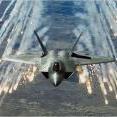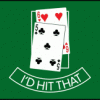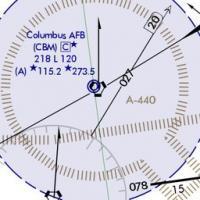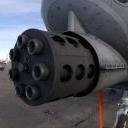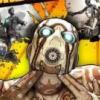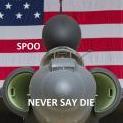Leaderboard
Popular Content
Showing content with the highest reputation on 01/31/2017 in all areas
-
Not Friday yet, but here's a quick history lesson: The AAF graduated over 193,000 pilots (just pilots, not bombardiers, navs, flt engineers, gunners, etc.) in 6 years, between Jul '39 and Aug '45. There were only 966 student pilots in training in Sep 39. By Dec 43, there were 74,000 pilots in stateside training alone. Bottom line, Of course there was little to no briefing. The instructors were barely more qualified than their students. They had comparatively little knowledge to offer, and minimal time to impart what wisdom they did have. Wartime flying "training" was less training than Darwinian survival of the fittest, because it was the blind leading the blind. Consequently, there were 136,000 flying training eliminees and fatalities in stateside training alone. Over 65,000 aircraft were lost in the CONUS alone during the war (15,000 of them were heavy & very heavy bombers). My point--Wanna get people killed or injured? Fight wars without effective planning, briefing and postmission debriefing. WW II sounds really awesome, until you realize the human carnage and piles of bent metal that went along with it. TT2 points
-
2 points
-
It's time for pilots to take back the USAF. I get it, 6-9 years back when we were scared of pissing someone off and getting an RPA or RIF, we bowed to the chiefs and spineless leaders. You are setting an example for the young airmen just by being a pilot. Pilots should have status, status should have privileges. Don't be an ass, don't be a clown with your superiority but accept it, you are at the top of the food chain, act like it, be proud of your work that got you there. Don't let some jealous nonner shoe clerk pilot-wannabe strip you of it.....especially in times like this where you are finally being acknowledged as an asset. Sent from my iPhone using Baseops Network Forums2 points
-
2 points
-
Not throwing a spear at you but anyone with the attitude above. Few things make me more angry than someone being a bitch on assignment night. Hell no I did not want my RPA, I stood up, shook my flight CCs hand, saluted, he gave me a bro hug and said sorry man, I drank my bottle of Jack, cheered for my bros that got killer assignments and moved on. UPT is a amazing experience and just graduating is a lifetime accomplishment. I will be more than happy to kick anyone in the nuts and give them a bitch slap for being bitter about being non vol to a fighter. We have way to many other problems in every community than to deal with people not liking there airframe straight out of UPT.1 point
-
Jeezuzzz, it's been two (2) weeks since the guy was sworn in. His staff isn't even in place yet via the Senate. And he's already undone some things that were done by his predecessor.* Not to mention the near open revolt of supposedly apolitical civil servants at State and EPA. I'm not happy with the GOP and the reported** backpedaling on immediate repeal of Obamacare, etc., but Jesus who was not an immigrant despite what the Rev Sharpton claims, it's been all of two weeks... * The attention whore can't help but try to stay in the spotlight. Instead of staying quiet like the tradition of ex-President's are supposed to be - nobody wants the peanut gallery complaining during their time, so they haven't done it - mostly - to the replacement guy. But this guy takes the narcissistic cake. Just f'in' go away already... **I LOVED the immediate firing of the acting AG yesterday.1 point
-
There are some mitigating factors in that the PBR is VERY delayed and might not be submitted for another 60-90 days (typically the RMD is out by now. With approval not likely until the summer it adds to the confusion. Regardless, they are fucked...1 point
-
1 point
-
I would look at the recent ENJJPT drop. All those dudes flew 38's, but they didn't all end up in fighters/bombers. When I went through there, we had guys that were all about fighters at the start and changed their minds throughout the course. Our Flight Commander found good assignments for them and it worked out. That was many moons ago, however. I know of a couple prior U-28 cso's that wanted to come back as pilots but were forced into fighters. My unsolicited advice to studs now that don't want fighters would be to still do your best to earn some kind of leverage (minimal) but also don't take words of mouth too seriously. I remember the word on the street going through was that the Eagle community was so terrible and everyone was out to get you etc. I was freaked when I showed up to Klamath and it turned out to be totally awesome and the instructors were totally there to help out. Long story short is regardless of what you fly, you're going to have a great time with great people.1 point
-
I see 3 options - suck it up, go bombers, quit/washout. Unless you're talking about being in the CAF in general, then option 2 is obviously n/a. I think people should know if they want the possibility of fighters or not towards the end of T-6s, prior to track select. I can't imagine this is a common problem (unless forced into 38s against will)1 point
-
No complaints so far, brother. I am enjoying watching the Republicans, who passed about what? 60 repeal bills for ObamaCare when they knew it would get vetoed? All of a sudden not pass a damn thing. Lots of swamp left.1 point
-
1 point
-
Buffs are about to start dropping on the Tone side, per AFPC. Our next IQT class has both a T-1 FAIP and a newbie.1 point
-
Totally get it...sounds like the standard nobody actually knows their own regs, so stuff like this isn't caught/people don't care. Though I am glad I didn't have to burn time trying to get the wg/cc sig, just to have the whole thing show up in his in container a week later froman mypers.1 point
-
I'm always a guy for jokes, but I appreciate the constructive feedback. My goal was to have my PPL finished by the time my package was submitted, but winter weather has slowed my training down quite a bit since the fall. I do plan on retaking the TBAS to further boost my PCSM and am confident that I can do much better. I felt comfortable with the multitasking but it took me getting the first 20 spatial orientation questions wrong after getting a bit confused by where the directions said the nose was supposed to be pointing. 62 is still decent, but ill do better if needed. I feel strong about the rest of my application. I absolutely knocked it out of the park with my interview and I still feel rather confident given the needs of the air force at the moment. Thank you for your condolences and encouragement! I'm sorry about yours as well. I am also about to try my luck with some Guard Units. Hoping to learn something new that will help with each application that proceeds it. I'll make sure I get in a cockpit1 point
-
1 point
-
There is a Dave Ramsey course for High School kids. Our kids did it through home schooling. My 23 yr old already has 10K in a ROTH.1 point
-
Dude, it's a step in the right direction. I'll take it. It won't solve all the problems, but it's a damned easy kill and serves to boost the morale a little bit, so let's take it in the spirit in which it was intended and build on this victory to try to get our morale patches back.1 point
-
A legend went west yesterday, Godspeed Mike. Hail Dragons. Article Link Dragon Lady Down Mike Hua’s airplane was leaving a silvery streak of vaporized jet fuel in its wake, as its tanks slowly drained through a fractured fuel line. The thin trail was barely visible in the starlight of a summer night; only a chase plane could have seen it. Hua had no idea his gas was bleeding away. But on August 3, 1959, the only chase plane in the world that could have paced him would have been another Lockheed U-2, since that’s what Hua was flying at 70,000 feet over Utah. Mike Hua was actually Major Hsichun Hua, an experienced F-86 Sabre pilot of the Republic of China Air Force, based on the island of Taiwan. He had been sent to Laughlin Air Force Base, in Texas, as one of a select group of Nationalist Chinese pilots appointed to train on the then super-secret spy plane so they could overfly mainland China. All of them had been arbitrarily given Western handles—Pete, Jack, Charlie, Sonny, Spike, Terry, Mickey, Mike—by their U.S. Air Force instructors. Hua, today a retired ROCAF general living in Maryland with an aeronautical engineering doctorate from Purdue, has retained Mike as part of his name ever since. That night in 1959, however, he was 34 years old and on just his seventh U-2 training flight. His assignment was to fly from Laughlin to overhead Big Spring, Texas; then northwest to his turnaround point at Ogden, Utah; southwest to Delta, Utah; and finally southeast for the long, lonely slog home. Hua wasn’t flying from VOR to VOR as any private pilot of the time could have done with his simple Narco VHF radio, and of course there was no such thing as GPS. He was navigating with the U-2A’s built-in sextant, taking star sights like a 19th-century mariner, albeit through a hooded cockpit scope. He was doing this while wearing a pressure suit and helmet, in a cockpit the size of a 1952 VW Bug driver’s seat, at night, in an airplane that required remarkably precise speed control. Five knots too fast meant Mach overspeed and possible failure of the fragile airframe, and 5 knots too slow meant a stall upset and equally destructive airframe failure. All of Hua’s U-2 flights had been solos, since no two-seaters existed as yet. To have survived this far was a sign of substantial Chinese aviation talent, for the “Dragon Lady” was the hardest-to-land airplane in the Air Force’s inventory, and perhaps the hardest-to-land aircraft in living memory. (Those who have piloted restored and replicated Gee Bee racers might disagree.) But Hua had landed solo six times, and his seventh U-2 touchdown was about to go down in aviation history. The spy planes were usually landed with the help of an experienced U-2 pilot stationed at the approach end of the runway, like an aircraft carrier’s LSO, to tell the pilot how many feet above the ground he was. Assuming the pilot had at least nailed the over-the-fence airspeed, every extra foot of altitude meant 1,000 more feet of runway would be needed. Eventually—and to this day—U-2s began to be landed with the help of “mobiles.” These are U-2 pilots driving muscle cars that can easily accelerate to 100 mph from a taxiway to catch up with a landing U-2 so the driver can call out precise altitudes, even in inches, to the pilot. Mike Hua had no mobile. In fact he didn’t have a friend in the world when his Pratt & Whitney J57 went silent 13 miles above Utah. U-2As had no fuel-quantity gauges—assumedly a weight-saving measure. A low-fuel warning light was supposed to come on when just 40 gallons remained, but Hua doesn’t remember seeing it. Since a glowing red instrument panel warning light would be impossible to ignore at night, apparently it had failed. It was 2258 local time when the big Pratt checked out and left Hua with nothing but the sound of the slipstream. Actually, Hua did have one friend: his long-winged Lockheed jet sailplane. From 70,000 feet, a U-2 could glide 250 nautical miles to sea level—make that 200 nm in Hua’s case, since he would ultimately land at 5,900 above sea level. For every 23 feet it traveled, an engine-out U-2 sank just one foot, a glide ratio identical to that of the ubiquitous Schweitzer 2-33 two-seat sailplane. Not far behind Hua was Hill Air Force Base, at Ogden. Crystal-clear hindsight 55 years later suggests that Hua could easily have turned around and glided to its 13,000-foot runway, where the U-2 would quickly be dragged into a hangar, its secrets intact. But below him was an unbroken undercast with tops at 40,000 feet, and Hua had watched the cloud buildup gradually obscure all ground lights during his leg from Texas to the Ogden turnaround point. Shooting an unfamiliar, dead-stick, single-pilot instrument approach into Hill would not have been fun. There was a better reason why Hua confidently held his southeast heading toward home. “We were told during ground school that the engine was not stable at high altitudes and would occasionally flame out,” he noted in a recent e-mail. “It could easily be relit below 35,000 feet, though. Before the first training flight, we were told to shut down the engine at altitude and to glide down to 35,000 feet to practice an air start, which we did. That night, I was frankly overconfident that the engine was having one of these ‘normal’ flameouts, so I maintained my course. When my air-start attempts failed, I was too low to reach any major field.” Below 35,000 feet, there was enough oxygen to support a relight, but Hua had no way of knowing his tanks were dry, and nothing in the world would restart his engine. As he entered the undercast, Hua called Hill AFB to try to get a steer away from the mountains that he knew were hidden below him. No answer. He transmitted a mayday on the guard frequency that was supposedly monitored by the military. Still no answer. Was there nobody flying late at night over Utah? Possible. Did nobody understand Hua’s Chinese-accented English? Maybe. Life was getting complicated. He’d lost the autopilot when the engine failed and the generator went offline, and a U-2A was a full-time job to fly manually at altitude. Hua’s pressure suit had also automatically inflated, which left him in solid clouds and turbulence trying to read a chart, working radios and hand-flying the airplane while blown up like the Michelin Man. The pilot’s classic mantra “aviate, navigate, communicate” may sound simple, but not when each step requires his full attention. Once Hua reached combustion-sustaining air at 35,000 feet, he tried three engine relights. He even got out the emergency procedures checklist to make sure he was doing it right, but of course he was trying to relight air, not jet fuel. Now he was down to 17,000 feet. His continued involuntary descent in the clouds must have seemed a butt-clenching eternity, but at 7,000 feet above sea level the U-2 broke into the clear and Hua could see how lucky he’d been. He was flying southeast in a dark valley, with mountains to each side, their tops still in the clouds. Hua was actually just 1,000 feet or so above the ground, perhaps less. At his 11 o’clock, he saw the lights of civilization, which turned out to be the small city of Cortez, Colo. And Cortez had a municipal airport. Luck continued to ride with Hua. He spotted the airport’s rotating beacon several miles southwest of town, and then the runway lights. The Cortez city council had recently decided that leaving the runway lights on at night was an unnecessary expense for a cash-strapped town. But as midnight neared, an inbound Frontier Airlines flight was running late. So on this night of all nights, the lights had been left on. Hua glided across Cortez Runway 21 from west to east, then made a broad 270-degree turn to the left and gently rolled out on a long final to the 7,200-foot runway. (Don’t be fooled by that seemingly ample length. Cortez Municipal is at 5,900 feet above sea level, and at that density altitude on a warm August night, the runway was probably equivalent to a sea-level strip roughly half that length. It was also only 10 feet wider on each side than the U-2A’s 80-foot wingspan.) In a remarkable demonstration of precision approach-speed control under extreme pressure, Hua put his big U-2A down, if not on the numbers, certainly close enough for government work, as the classic and appropriate expression has it. The extreme challenge in landing an early U-2 was created by a combination of high-aspect-ratio wings fat with low-speed lift, particularly in ground effect, and a lack of effective lift-dumping devices. Sailplanes with U-2-like wings have powerful spoilers that are as effective as a throttle: Pop the spoilers and the glider decelerates like a Cessna with its throttle pulled to idle. Retract the spoilers and the glider reacts as though you had added power. The only way to bring a U-2 to earth, however, was to bleed away every ounce of lift short of a stall while at the same time avoiding a stall, since dropping a U-2 onto a runway from 2 or 3 feet could terminally damage its fragile airframe. Try to land a U-2 in a level attitude on the main gear—to “wheel it on” with its wings still anxious to fly—and the spy plane would bounce back into the air and float the length of the longest runway the Air Force owned. Touch tailwheel first just as the airplane loosed its grasp on the air and a U-2 would call it a day. Major Hua got it exactly right that night. To his surprise, the U-2’s landing gear collapsed during rollout because the airplane had lost its hydraulic pump after the engine failure, so the gear extended but lacked the hydraulic pressure to engage the downlocks. “I felt like I had made a nice landing, but then the belly scratched the runway,” Hua wrote. This put the wingtips close enough to the runway that a ground loop was inevitable. The left wing touched, and the big Lockheed spun out like an old Porsche 911, ending up facing backward in the sagebrush alongside the runway. “I so lucky. I so lucky,” a bystander recalls Hua muttering after the landing. But luck be damned, the Cortez incident was a textbook example of how to handle a nighttime, IFR, single-engine, in-flight engine failure calmly and skillfully. Give that man a medal, the Air Force said, and awarded Hua the Distinguished Flying Cross. From the Denver Post: After receiving a Distinguished Flying Cross from the U.S. Air Force for his feat, Hua went on to become a four-star general in the Republic of China Air Force. He earned a master’s degree and doctorate in aeronautical engineering at Purdue University and was in charge of Taiwan’s aerospace program. Now living in Maryland, he has written or been a source for several articles about the landing. Hua also wrote a book, “Lost Black Cats: The Story of Two Captured U-2 Pilots”, about two of his comrades who were captured in mainland China after their spy planes went down.1 point
-
1 point
-
Laughlin circa 1990ish Caught by a State Trooper who noticed the tire marks and thought kids were drag racing so he did a little stakeout and was a bit surprised when "Cool-25" did a little touch and go. Yes there was a patch...need to search my archives in the attic. There was another group, I think the "Turtle Club", that would zoom the T-38 and when they got below 50 knots, open the canopy and quickly place a sticker on the outside that was then "verified" by someone read-in in the RSU. All went south went an IP couldn't get the canopy latched and ultimately lost his canopy over Ft Stockton. Allegedly.1 point

